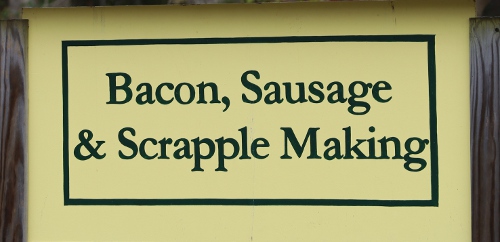
There's a sign at the turn off Route 29, announcing today's event.
.
If you have any comments, observations, or questions about what you read here, remember you can always Contact Me
All content included on this site such as text, graphics and images is protected by U.S and international copyright law.
The compilation of all content on this site is the exclusive property of the site copyright holder.
Making Sausage and Scrapple at Howell Living History Farm
Saturday, 13 November 2021
The farming year has cycles, just like the seasons. And now that the weather has turned colder it is time for butchering. Pigs have always been popular livestock - they are easy keepers and as the old saying goes, everything can be used but the squeal.

There's a sign at the turn off Route 29, announcing today's event.
After arriving at the visitors center and signing in I go to the farmhouse where today's event is taking place. The weather forecast indicates rain may be likely later on. That's why we are under cover in the blacksmithing area rather than out in the open. Several people are already at work on one-half of a hog, about a 250 pound carcass. Today's program intends to show visitors what was done with scraps and bones and fat, not the chops and roasts. Bacon is made from the belly of the pig and I've made bacon myself.
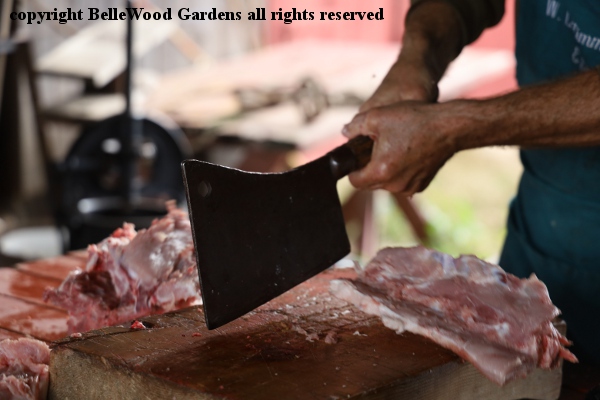
Tools used for breaking the carcass - cutting apart - include sharp knives, a saw, and a cleaver.
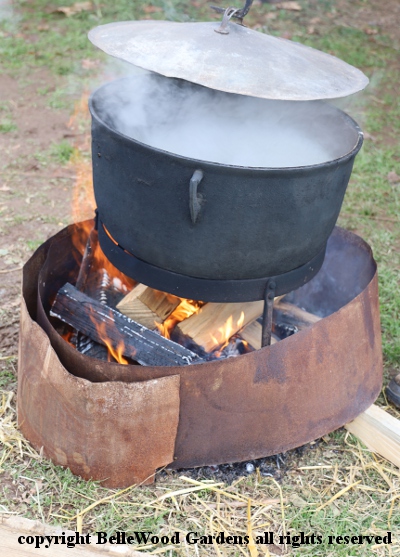
Scraps are cooked in boiling water to make scrapple. Think polenta with pork.

The meaty bones are added to the pot after the meat is trimmed off.

Fat is removed from the carcass to be rendered down into lard. Lard has many uses such as
for cooking - potatoes fried in lard are delicious. Baking - flakiest pie crust. Also making soap.

As the meat is trimmed any fatty scraps are set aside to be rendered. All lard is useful. The highest quality lard is leaf lard, from around the pig's kidneys. And just to let you know - lard is actually lower in both cholesterol and saturated fat than butter.

A 15 gallon rendering kettle, complete with fire box built into the base.

Rendering melts the fat and drives off any moisture which would allow the lard to spoil. The lard is done when the cracklings float up to the top of the melted fat. Carefully strain to remove all particulates, cool, and store the lard. The crunchy cracklings are a treat.
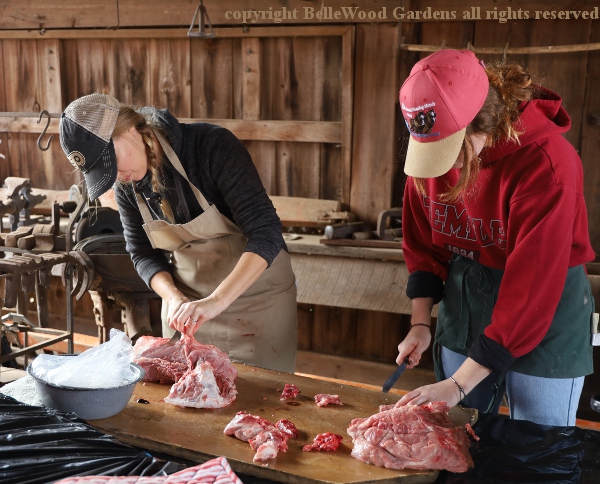
People are at work trimming meat for sausage making. Some fat is necessary
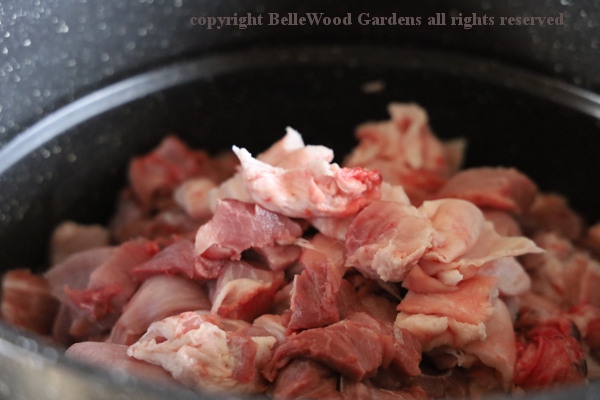
or the sausage will be dry and tasteless. Too lean, and sausage would be crumbly when cooked.
Fat helps the ingredients to bind together. About 30% fat / 70% meat is a good ratio to aim for.
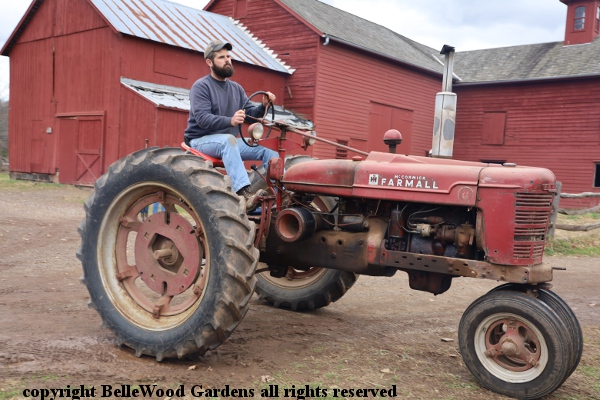
Here's the McCormick Farmall tractor. What does a tractor have to do with sausage making?
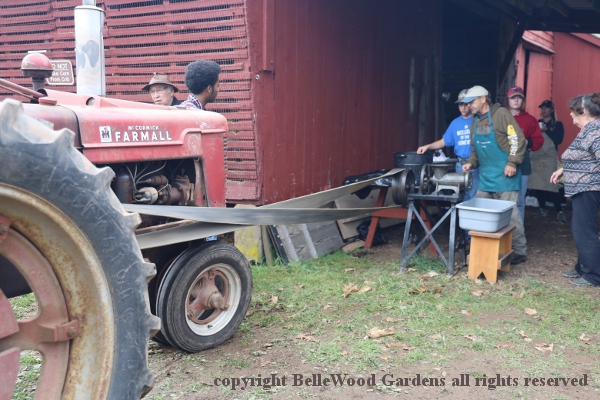
With the PTO (power take off) and a belt, the grinder quickly turns meat into sausage.

The meat and fat is ground once. Embellishments are then added and ground again. This batch will become apple and onion sausage, with some spices and herbs, such as oregano. Another batch will flavored with maple syrup that was made here on the farm.
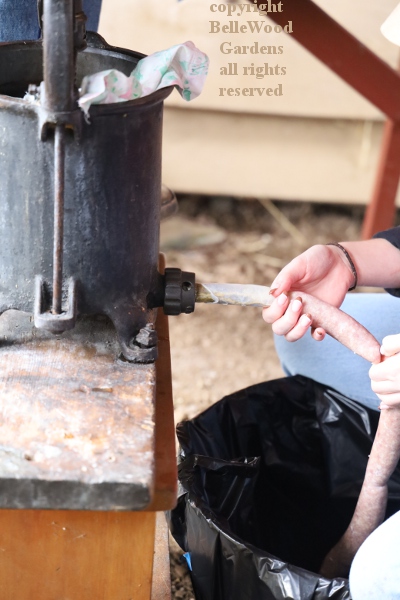
Sausages could be left in bulk form. This batch is stuffed into casings, which are the cleaned intestines - not from this pig but purchased from a supplier. Note: I do see small tubs of hog casings in the meat sections of supermarkets.
Kim, the kitchen maven here at Howell, says apple onion sausage will be fried up and samples offered for us to taste. Yumm! But the sky which had been overcast has now turned black. There are huge bolts of lightening and a timpani of thunder sounding like ripping cloth. I decide prudence is called for and as rain splats on my windshield decide to go home.
Logging and firewood on 20 November is the next event here at Howell Living History Farm.
Back to Top
Back to November
Back to the main Diary Page